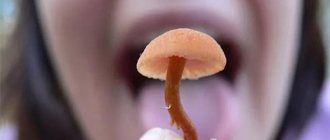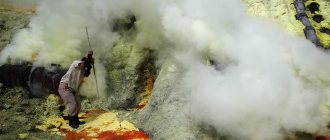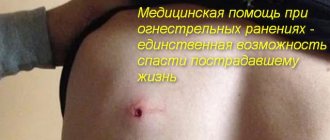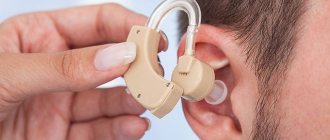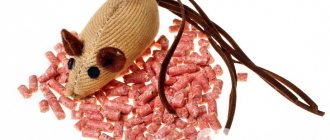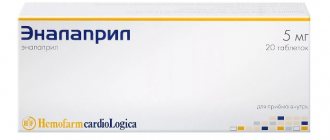When eating low-quality food products, their improper preparation and storage, food poisoning may occur - foodborne illness. By low-quality we mean products infected with various microorganisms and their toxins. Mushroom poisoning can be classified as a separate group.
The most dangerous are products of animal origin (meat, fish, sausages, canned food, milk and products made from it - confectionery with cream, ice cream). Shredded meat - pates, minced meat, jellied meat - is especially easily infected.
The first symptoms of food poisoning may appear 2-4 hours after eating (in some cases, 30 minutes), or even 20-26 hours. This largely depends on the type and dose of the toxin and the state of the person’s immune system.
Characteristic signs of food poisoning are:
- general malaise, nausea, repeated vomiting, cramping abdominal pain, frequent loose stools, pale skin, thirst, decreased blood pressure, increased and weakened pulse, pale skin, increased body temperature (chills may appear), sometimes convulsions and fainting are possible condition.
First aid for food poisoning
Measures taken at the first signs of poisoning are aimed at maximizing the removal of toxins from the body and preventing dehydration.
- It is necessary to rinse the stomach. To do this, you need to drink about two glasses of warm water at room temperature and induce vomiting. It is advisable to carry out the procedure until clean water leaves the stomach.
These measures are usually sufficient to cope with the symptoms of food poisoning. But you don’t know what exactly caused the attack, and it’s impossible to deal with many toxins on your own at home.
Be sure to call an ambulance if:
- A child under 3 years of age, a pregnant woman or an elderly person was poisoned. Poisoning is accompanied by diarrhea more than 10 times a day, uncontrollable vomiting or increasing weakness. Poisoning is accompanied by uncharacteristic symptoms.
In case of severe poisoning caused by pathogens such as salmonella, shigella, botulism bacilli, etc., symptoms characteristic of ordinary poisoning may be absent.
For example, after eating food contaminated with botulism bacilli, general malaise, headache, and dizziness may appear. In this case, the body temperature is normal, the stomach is swollen, but there is no stool. A day later, signs of severe damage to the central nervous system appear: double vision, drooping of the upper eyelid, paralysis of the soft palate. Abdominal bloating increases, and urinary retention occurs.
Providing first aid for poisoning with botulism bacilli also comes down to gastric lavage, taking toxin-binding drugs and laxatives. But the most important thing is the administration of antibotulinum serum, which is only possible in a hospital setting. And, therefore, the most important thing in such poisonings is to deliver the patient to a medical facility on time.
A healthy lifestyle for you is, first of all,...
All iLive content is reviewed by medical experts to ensure it is as accurate and factual as possible.
We have strict sourcing guidelines and only link to reputable sites, academic research institutions and, where possible, proven medical studies. Please note that the numbers in parentheses ([1], [2], etc.) are clickable links to such studies.
If you believe that any of our content is inaccurate, out of date, or otherwise questionable, please select it and press Ctrl + Enter.
Help for food poisoning should be provided as quickly as possible; sometimes not only the health of the victim, but also his life depends on the speed of timely and competent actions. Food intoxication most often occurs in an acute form; symptoms develop quickly and are associated with the type of poisoning:
- Foodborne illnesses are poisoning from food containing microbes.
- Intoxication with chemicals.
- Poisoning by poisons of animals, insects or plants.
Providing assistance for food poisoning is based on four rules:
- Cleansing (gastric lavage or infusion therapy).
- Adsorption and removal of toxins.
- Drink plenty of fluids.
- Strict diet.
Independent actions to cleanse the stomach and neutralize poisoning are unacceptable in certain cases: calling an ambulance is necessary for the following categories of victims:
- Elderly persons (over 60 years old).
- Children aged from birth to 15 years.
- People with a history of chronic diseases (gastrointestinal tract, cardiology, diabetes mellitus, nephropathies, neurological pathologies, asthma and others).
- Food poisoning from poisonous plants or mushrooms.
- In cases where the victim exhibits symptoms of paralysis and impaired consciousness.
If intoxication is determined to be mild and the patient does not have life-threatening symptoms (uncontrollable vomiting, bloody diarrhea, drop in blood pressure and seizures), you can do the following:
- The victim needs to drink as much clean water as possible (boiled, purified, mineral water without gas). Soda solutions, chamomile decoctions and other “folk” methods are not appropriate and can even be harmful at the first stage of cleansing. The pathogen and toxin that caused the poisoning are unknown, as are the reactions occurring inside the body. If the patient does not have a gag reflex, you can activate it by pressing on the root of the tongue (it is better to do this with a clean spoon rather than with your finger).
- Drinking water will not only help cleanse the digestive tract, but will also replenish the loss of fluid that is removed from the body through vomit and diarrhea. Providing assistance in case of poisoning is neutralizing dehydration. The victim needs to drink at least 2 liters of water per day. It is better if it is a rehydration drug purchased at a pharmacy (Romphalac, Atoxil or Regidron). At home, you can prepare a drink in this way: add a teaspoon of salt and two tablespoons of sugar to 1 liter of purified water.
- The patient is given a toxin-absorbing drug to drink – Enterosgel or activated carbon (suspension).
If the symptoms of poisoning do not subside after 4-6 hours, you need to call a doctor; self-medication can aggravate the victim’s condition.
[1], [2], [3]
Treatment methods
There are several detoxification techniques that can be used individually or in conjunction with each other.
Next, treatment methods will be described according to frequency of use, from frequently used to complex and rare:
- Gastric lavage and administration of enterosorbents. Usually produced on DHE. However, if this has not been done before, the procedure is carried out in a hospital. Here the patient is given a thick gastric tube, through which the stomach is washed. After the manipulation is completed, sorbents or castor oil are introduced inside, after which the probe is removed.
- Forced diuresis. It is carried out for all patients with acute poisoning. Allows you to restore water and electrolyte balance, accelerates the elimination of poisons in the urine. Saline compounds and crystalloids are used to carry out the procedure. The volume of fluid administered intravenously can reach 6-7 liters. After this, the patient is administered Lasix at a dose of 60-80 mg.
- Stimulation of stool. A laxative is usually used for drug poisoning, including azaleptine, amitriptyline, and finlepsin. To achieve the desired effect, the patient is given castor oil in a dose of 100-150 ml or magnesium sulfate 25% in a similar amount. Together with copious loose stools, unabsorbed fractions of the poison and its volumes that re-enter the intestines from the bloodstream are removed.
- Antidote treatment. Antidotes are drugs that provide a specific antidote. Their administration is mandatory if there is an antidote to the toxic agent. For example, the antidote against aspirin is ACC, and against ethanol and heavy metal salts - unithiol. These products bind and neutralize toxins, making them inactive.
- Hemodialysis. A method of extracorporeal detoxification, in which the patient's blood is taken and passed through a special hemofilter with subsequent return to the bloodstream. The procedure is carried out in cases of poisoning with drugs, chemicals, and renal failure in the somatic stage.
- Peritoneal dialysis
To implement the method, drainage is inserted into the abdominal cavity. Through them, a dialysate solution is introduced into the abdominal cavity, washing the organs. After this, the solution is discharged through a special pipe system. The procedure is used extremely rarely, as it requires the presence of many specialists, is technically complex and dangerous.
Pharmacological therapy (with the exception of antidotes) for poisoning is aimed at protecting internal organs from hypoxia and toxic damage, stabilizing vital signs, and achieving a restorative effect.
Patients are administered hepatoprotectors, vitamins, antiplatelet agents, and agents that reduce tissue oxygen demand. If necessary, symptomatic therapy is prescribed (painkillers, antipyretics, antiemetics, pressor amines).
First aid for food poisoning
This is the precise implementation of already familiar activities. To do this, it is absolutely not necessary to take special courses, you just need to remember the algorithm of actions:
- Emergency removal of toxins from the digestive tract. This can be done by gastric lavage - taking a large amount of liquid and activating the gag reflex. Please note that with the help of vomiting, the body cleanses the stomach, and diarrhea cleanses the intestines, so you should not stop it, at least in the first 2-3 hours after poisoning.
- Stopping the spread of toxins. This can be done by taking sorbents - a suspension of activated carbon, Polysorb, Enterosgel, Liferan.
- Reducing dehydration or dehydration. This can be done by drinking plenty of fluids. Pharmaceutical drugs that are effective are Romfalak, Gidrovit, Regidron, Reosolan, Gastrolit, Normohydron. You can drink regular purified or boiled water, as well as still mineral water.
- Providing “rest” to the digestive organs. First aid for food poisoning is hunger on the first day and dietary restrictions for the next 5-7 days. Food should be boiled, crushed, enveloping (rice broth, jelly, light puree soups).
- Restoring the function of the gastrointestinal tract. This is done by taking enzyme supplements and probiotics for two weeks. Mezim, Festal, Enzimtal are suitable enzymes. Probiotics – Bifiform, Lactobacterin, Probifor.
Symptoms
Of the general list of symptoms, the most common is nausea and vomiting during poisoning - these are the body’s first reactions to toxins entering the blood from the intestines. Through vomiting, the body tries to remove harmful substances, so vomiting during intoxication cannot be stopped, with the exception of cases when vomiting interferes with basic life processes, in these cases medical attention is necessary.
Note! It is important to distinguish attacks of vomiting due to food poisoning from the occurrence of the same symptom due to other reasons.
Vomiting in case of poisoning rarely begins suddenly, most often it occurs gradually, begins with unpleasant sensations in the stomach, pain and bloating, then attacks of nausea develop, which end in vomiting.
In addition to vomiting, other signs of food poisoning appear:
- general malaise;
- bloating and increased gas formation;
- diarrhea;
- drowsiness;
- headache;
- muscle weakness;
- increased sweating and chills;
- lowering blood pressure;
- tachycardia.
An alarming symptom of food poisoning is visual or auditory hallucinations. Such conditions indicate that the intoxication process has affected the nervous system, its damage may be irreversible.
Another sign that a person has been poisoned is an elevated temperature . In case of food poisoning with fever, you should not immediately sound the alarm; if the increase is insignificant and short-lived, then this sign indicates the activation of the body’s immune defense.
Listen to what Doctor Myasnikov recommends for poisoning!
Emergency care for food poisoning
This is pathogenetic therapy, which is carried out only by specialists with medical education. Such assistance is necessary for acute forms of intoxication, as well as in cases where we are talking about young children, the elderly or those who suffer from chronic diseases (diabetes, bronchial asthma, cardiopathy, neurological diseases). The first thing an emergency doctor does is assess the patient’s condition and make a primary differential diagnosis of the type of poisoning. The issue of urgent hospitalization is decided depending on the severity of intoxication and the threat to the life of the victim.
In inpatient conditions, the diagnosis is clarified using a set of laboratory tests, which are carried out in the “cito” mode. Further actions are almost identical to those carried out at home, however, professional emergency care for food poisoning involves the use of specific detoxification measures, infusion of saline solutions and symptomatic treatment.
Various methods of removing toxins can be used - from gastric lavage using a probe and the use of a siphon enema to forced diuresis and hemodialysis. In addition to detoxification measures, in parallel, the patient is prescribed infusions to restore water and electrolyte balance, and antibacterial therapy. Next, the doctors’ actions are aimed at correcting the victim’s condition and eliminating all possible consequences of poisoning.
Features of diagnosis and treatment of acute poisoning
After first aid has been provided for acute poisoning, a comprehensive examination will be required. Diagnostics can be carried out in different directions to accurately determine the factor that caused health problems.
- The doctor conducts a survey of the victim’s relatives, as the specialist takes into account the specific development of the disease and carefully studies the patient’s medical history.
- A set of examinations is required, which includes various procedures. Instrumental diagnostics are carried out in different ways, as they depend on the available equipment for monitoring the functional state of organs. The doctor individually determines what information about the patient’s health status is required to determine treatment and rehabilitation measures.
- Toxicological diagnostics. The examination involves identifying toxic substances that are present in the blood and lymph of the victim. It is also possible to determine the characteristics of the effect on the liver, kidneys and other organs, thanks to which it is possible to carry out complex treatment with guaranteed restoration of health.
First aid for food poisoning
This is a clear plan of action which is recommended to be read and memorized as the summer season is just around the corner hence the risk of food poisoning increases manifold.
Signs of poisoning that require first aid:
- Feeling of nausea, vomiting.
- Diarrhea, often severe, possibly mixed with mucus and blood.
- Increased body temperature to 38-39 degrees, chills.
- Feeling of dry mouth, difficulty breathing.
- Lack of urge to urinate when drinking heavily.
- Fall in blood pressure.
- Cyanosis (blue discoloration of the skin).
- Loss of coordination, dizziness, double vision.
The first actions are to intensify or provoke vomiting with liquid, lay the victim on his side, give plenty of fluids, cold on the forehead, and a heating pad on the calves. If the symptoms subside, give an adsorbent drug and monitor the patient’s condition.
Life-threatening signs of poisoning (paralysis, disruption of the central nervous system, drop in blood pressure, bloody diarrhea) require an immediate call to the ambulance. If the symptoms subside, a doctor should be called in any case to determine the cause of intoxication and eliminate its possible spread.
[7], [8], [9], [10]
Symptoms of poisoning with household chemicals
If the cause of poor health is inhalation of vapors from liquids used to disinfect plumbing fixtures, clean surfaces, or remove stains from clothing, symptoms of poisoning may be as follows:
- coughing;
- the appearance of pain in the eyes;
- swelling of the mucous membranes and larynx;
- breathing rhythm disturbance;
- asphyxia.
If poisoning is associated with poison entering the gastrointestinal tract, the following symptoms occur:
- burns of the stomach, larynx, intestines;
- tracheal damage;
- destruction of red blood cells;
- severe liver damage.
Chronic poisoning is manifested by decreased hemoglobin, high blood pressure, brittle and dry hair.
Poisoning with alkaline substances (cleaning agents for dishes, water pipes, kitchen cabinet surfaces, and others) manifests itself as ailments:
- feeling of thirst;
- burns of mucous membranes;
- swelling;
- vomiting and diarrhea (sometimes with blood);
- ulcers of the stomach and intestines.
Alkali poisoning is dangerous. Pulmonary edema can be fatal.
Helping a child with food poisoning
Help for a child is most often provided in a medical institution in an inpatient setting. There are often cases when parents try to help their sick child on their own, wasting precious time. In children, food intoxication occurs in an acute form, so calling an ambulance is most often inevitable. The following signs of poisoning are especially alarming:
- Increase in body temperature to 38 degrees. Temperature that lasts for more than 2 hours.
- Colic and abdominal pain of increasing nature. The pain does not go away after vomiting or defecation.
- Uncontrollable vomiting, diarrhea (risk of rapid dehydration).
- No urination for more than 4-5 hours.
- Dry mouth, increased salivation, difficulty swallowing and breathing.
- Blueness of the skin, fainting.
You can try to help your child with mild food poisoning at home. Mild intoxications include cases accompanied by upset stool (no more than 3-5 times a day), a slight increase in temperature, and periodic vomiting). Parents' actions should be as follows:
- Even in case of mild poisoning, you should call a doctor or emergency dispatch service to inform about the poisoning and receive competent recommendations and advice on helping your child.
- Before a doctor’s visit or an ambulance arrives, the child needs to rinse his stomach. Vomiting should not frighten parents - this is how the body tries to remove toxins on its own. In order for this process to speed up, you need to give the child to drink clean water at room temperature. The volume of fluid depends on age, and is calculated according to the following scheme:
| Age (months, years) | Amount of liquid (ml) |
| From birth to 1 month | 10-15 |
| 1 to 2 months | 35-70 |
| From 2 to 4 months | 70-90 |
| From 4 to six months | 90-110 |
| From six months to 8 months | 110-120 |
| From 8 to one year | 120-140 |
| From one year to 3 years | 150-200 |
| From 3 to 5 years | 200-250 |
| From 5 to 7 years | 250-300 |
| From 7 to 11 years | 300-450 |
| From 11 to 14 years | 450-500 |
The table shows the volume of liquid that can be given to a child at a time.
The gag reflex can be activated by gently pressing on the root of the tongue with a teaspoon or a cleanly washed finger. The steps must be repeated until the vomit is cleared of food debris.
- After vomiting, it is necessary to place the child each time so that his head is turned to the side (reducing the risk of possible aspiration).
- After the gag reflex subsides, it is necessary to give the child fluids as often as possible to prevent dehydration.
- Enterosgel is indicated for the absorption of toxins in case of food poisoning. Children over 5-6 years old can be given a suspension of activated carbon at the rate of 1 tablet per kilogram of weight.
- If the symptoms of poisoning subside within 24 hours, from the second day the child is prescribed a gentle diet. It is advisable to discuss the menu and set of products with a doctor, who in any case must be called.
Food intoxication in a mild form, with competent and timely action, does not require urgent hospitalization and can be treated at home.
What not to do if you have food poisoning
- You cannot induce a gag reflex in an unconscious patient, in pregnant women or in children under 2 years of age. Vomiting is also contraindicated in case of seizures or cardiac diseases.
- Do not place a heating pad on the abdominal area.
- Do not give fixatives or decoctions for diarrhea.
- Vomiting can aggravate a serious condition in case of poisoning with acid, petroleum products, or alkali.
- You should not give an enema yourself, especially to young children, elderly people and pregnant women.
- Do not give milk or carbonated water as a drink.
- You can’t do anything on your own—give an alkaline drink in case of acid poisoning and vice versa.
Causes of household poisoning
Parents of young children often seek help for poisoning with medications or cleaning products. In adults, alcohol is a common cause of poisoning.
The causes of household poisoning can be:
- Contact of a harmful substance on the mucous membrane, which causes a burn.
- Frequent use of products containing toxic substances. They accumulate, leading to intoxication. In addition, failure to comply with the dosage can lead to allergies.
- Toxic fumes in poorly ventilated areas.
- A person may confuse a clear, toxic liquid with water.
- Combining several home cleaning products.
Symptoms of food poisoning
The first signs of food poisoning appear within 2-6 hours after eating.
Symptoms of food poisoning include:
- nausea;
- vomit;
- diarrhea;
- pain and cramps in the abdomen;
- increased body temperature, chills;
- weakness, dizziness;
- pale green complexion.
If you take the right first aid measures, your health should improve within a few hours. Although, some symptoms, such as abdominal pain, flatulence and general weakness, may accompany the patient for several more days.
The final recovery of the body occurs within 1-3 days.
Causes of food poisoning
Food poisoning can be caused by foods and drinks containing harmful microorganisms. They can be found both in food and on it, for example, if food is taken with unwashed hands and then consumed.
Statistics show that poisoning is most often caused by:
- unwashed vegetables, herbs, fruits and berries;
- raw water;
- milk, spoiled fermented milk products;
- spoiled meat, eggs, fish;
- products that have not undergone sufficient heat treatment;
- foods that have been stored in the refrigerator or at room temperature for a long time.
- poisonous mushrooms, berries and other plants;
- chemicals on products that are used to process them for better preservation or to give them a marketable appearance.
Also, the cause of food poisoning can be failure to comply with personal hygiene rules.
Types of poisoning
Types of poisoning can be divided into two types: toxic food poisoning, infectious and non-infectious toxic poisoning. The first type is caused by eating food contaminated with pathogenic microorganisms. Food toxic infection can occur when eating stale food or not following proper hygiene standards. The most common infectious agents are:
- Clostridium botulism or Clostridium perfringens: develops in the body due to poor processing of meat products, as well as chicken and legumes.
- Staphylococcus aureus: actively multiplies in any products stored for a long time at room temperature.
- Bacillus cereus: Grows in perishable foods and is also found on rice contaminated with this bacterium long before processing.
Diagnosis of food poisoning
To make a diagnosis, the doctor collects a detailed medical history:
- interviews the patient;
- measures body temperature, blood pressure and pulse;
- conducts a general examination for the presence of an allergic reaction and palpation in the abdominal area.
Tests are also prescribed:
In rare cases, the following diagnostic procedures may be prescribed:
- fibroesophagogastroduodenoscopy;
- colonoscopy;
- sigmoidoscopy;
- fluoroscopy.
In case of mass food poisoning, the Sanitary and Epidemiological Service (SES) conducts an investigation of the products that could cause the poisoning.
First aid for food poisoning
Gastric lavage
When the first symptoms of food poisoning appear, it is necessary to urgently rinse the stomach. This is done to remove any remaining junk food.
A weak solution of potassium permanganate or soda is excellent for washing. To prepare the product: pour literally a few grains of potassium permanganate (until light pink) or 1 tbsp into 2 liters of water at room temperature. spoon of soda.
Drink this solution and induce vomiting by pressing with 2 fingers on the root of the tongue. Repeat the procedure until clear water comes out.
Important! If the victim of poisoning is a child under 2 years old, a person after a stroke or heart attack, in a very weakened or delirious state, or an unconscious person, then inducing vomiting at home is strictly prohibited! Such patients may choke on vomit. In this case, only health workers under their supervision can induce vomiting.
Removing toxins from the body
After gastric lavage, sorbents are taken to remove toxins from the body.
Among other sorbents we can highlight carbon, which we often recognize under the names: “Activated carbon” or “White carbon”.
These drugs reduce the absorption of harmful substances in the gastrointestinal tract and promote the removal from it not only of toxins, but also salts of heavy metals, alkaloids and other harmful substances.
When taking activated carbon, proceed from the calculation: 1 tablet per 10 kg of body weight. “White coal” is taken 2-4 tablets, depending on the severity of the poisoning.
2. Replenishment of fluid lost by the body
After gastric lavage and taking the sorbent, drinking plenty of fluids is necessary to replenish fluid loss in the body (after vomiting and diarrhea).
Drink 2–3 liters of boiled liquid per day. Alternate saline solution (add 1 teaspoon of table salt to 1 liter of boiled water), sweet, weak tea and chamomile decoction.
Drinking plenty of fluids not only restores water balance, but also helps a person warm up and also reduces pain.
Other events
Warming. Often, when food is poisoned, a person experiences chills. In this case, it must be warmed up. To keep warm, cover the patient with a blanket and apply a heating pad to the legs.
Diet. After first aid and treatment of poisoning, a gentle diet is prescribed, which helps to quickly restore the functionality of the digestive organs. We will look at diet a little later in this article.
Medicines for food poisoning:
To restore water balance. They are used after gastric lavage to prevent dehydration: “Regidron”, “Oralit”, “Chlorazol”, “Litrozol” and others.
To restore intestinal microflora. Used after gastric lavage: “Hilak Forte”, “Linex”, “Mezim”, etc.;
Antipyretics. Used if body temperature is above 37.5 degrees: Paracetamol, Ibuprofen, etc.
Antibiotics are used only in severe cases of poisoning and are prescribed only by the attending physician.
Taking painkillers without a doctor's recommendation is not recommended. These drugs can complicate the diagnosis of the body in case of complications.
How to treat food poisoning, what sorbents to take?
Treatment must be comprehensive. All this has already been discussed above. But, special attention should be paid to special preparations - sorbents, which will help quickly and safely eliminate even acute intoxication of the body.
The most popular, affordable and, it should be noted, one of the most effective sorbents is activated carbon. Almost everyone has this drug in their medicine cabinet.
The principle of its administration is extremely simple: 1 tablet per 10 kilograms of body weight. That is, if a person weighs, for example, 70 kilograms, then he needs to take 7 tablets of coal at the same time. It is better not to chew it, but to swallow it whole, washing it down with a sufficient amount of water at room temperature. After 12-15 hours, the dose can be repeated.
White coal has a similar effect. But, unlike black, it allows you not only to remove toxins and reduce gas formation, but also to preserve nutrients in the body that have not yet been absorbed by cells. The dosage of white coal is approximately 2 times less than black. Both types of coal, among other things, help to partially get rid of toxins, which helps normalize the activity of the gastrointestinal tract.
Other popular and effective sorbents: “Smecta”, “Lactofiltrum”, “Enterosgel”, “Silicon dioxide”. Very popular recently are the so-called “phytosorbents”, which are produced on the basis of specially selected medicinal herbs, such as: “Modifilan”, “Fitosorbovit”, “Fitosorbin”, “Phytocline” and others.
For example, Atoxil powder helped me with poisoning. In the summer, my children and I were poisoned, so the whole family took Atoxil.
But, with all due respect to modern drugs, we should not forget: the best “remedy” for eliminating intoxication in the body is clean drinking water!
After food poisoning (Diet for food poisoning)
An integral part of the treatment of food poisoning is diet.
In the first days after poisoning, it is necessary to give up fatty, spicy and heavy foods, milk and dairy products, alcohol and other bad habits.
Eat small meals. Steam or boil dishes. Drink a lot and gradually return to your diet.
To fully restore the body after food poisoning, follow some nutritional rules:
- the first day, when the symptoms of poisoning have disappeared, stick to bed rest and only drink - boiled water, weak green tea, rosehip decoction, chamomile tea (warm, you can sweeten it a little);
- on the second day, food should be light, boiled and chopped as much as possible. Start eating with cereals and broths - oatmeal, rice porridge (with water). Prepare vegetable or chicken broths. Don't forget to drink plenty of fluids;
- on the third and fourth days you can eat mashed potatoes, rice, lean fish fillet (steamed).
Folk remedies for food poisoning
Dill. Pour 1 teaspoon of dill seeds into 1.5 cups of boiling water and let them brew for about 5 minutes. Now boil the infusion for a couple of minutes, strain, let it cool slightly, and when the product is warm, add 1 teaspoon of honey to it. Take the resulting product instead of tea throughout the day. The daily norm is 1 liter.
Cinnamon. Pour ½ teaspoon of ground cinnamon into 1 cup of boiling water and mix thoroughly. Let the product sit for 15-20 minutes, then strain. Drink this decoction in small sips throughout the day. The daily norm is 1.5 l.
Wormwood and yarrow. Pour 500 ml of boiling water, 1 teaspoon of dried wormwood and 1 teaspoon of yarrow. Let them sit for about 20 minutes, then strain. Divide the resulting product into 5 servings to drink throughout the day.
Marshmallow root. Pour 1 teaspoon of crushed marshmallow roots into ½ cup of boiling water. Let the product sit for about 30 minutes, strain and add honey to it (to taste). Drink the resulting infusion 4 times a day, 1 tbsp. spoon.
Marshmallow flowers and leaves. 2 tbsp. Pour 2 cups of boiling water over spoons of marshmallow flowers and leaves. Leave to brew for 3-4 hours, then drink instead of tea 3 times a day.
Prevention of food poisoning
To prevent, or at least minimize the risk of food poisoning, adhere to the following preventive rules:
Practice personal hygiene: be sure to wash your hands and food before eating and before preparing. Before cracking an egg to cook, wash it with soap.
Wash knives and cutting boards thoroughly after touching raw meat. Buy several cutting boards for your kitchen. Cut greens, vegetables, fruits, bread, cheeses and sausages on one board, raw meat and fish on another.
Thaw meat only before cooking.
Fry fish and meat until completely cooked. Do not eat raw or half-raw meat, fish and eggs.
Hide food from flies and other insects.
Do not eat foods that cause you doubt (bad smell, stale appearance, strange taste). Make sure there are no spoiled foods in the refrigerator.
Don't cook a lot of food. Store prepared foods in the refrigerator for no more than 3 days.
Observe the product proximity in the refrigerator. Do not store raw meat and fish together with prepared foods in the same compartment.
Do not eat food from cracked or bulging cans. And also throw away the canned food if, when opening the lid, the can did not release air.
Eat mushrooms only if you are 100% sure of them.
You should not eat green potatoes. Sprouted potatoes must be thoroughly peeled.
Do not eat caviar and milt of pike, perch, burbot and mackerel if they are caught during the spawning period, because during this period they secrete poison.
Do not store food in galvanized, copper, or scratched enamel containers.
Do not buy canned food if it is in a wrinkled container without a label. When you open the canned food, put it in a plate or jar for storage. Do not leave it in the jar, it will oxidize.
When purchasing food products, pay attention to the integrity of the packaging, production date and shelf life. Store products according to the manufacturer's recommendations on the packaging.
Also pay attention to the cleanliness of the catering establishment where you are thinking of having a meal. Do not buy ready-made salads dressed with mayonnaise, especially in spontaneous retail places.
Try to refrain from eating food purchased at train stations, especially pies, pasties, belyashi, etc.
It is also useful to know the composition of the products you buy. Modern business does not stand still. From year to year, food products increasingly use substitutes for natural products, as well as other inventions of the chemical industry, which are indicated on packages as “E***” (for example, E452, E965, etc.). More details about the so-called eshkah, you can read in this article.
Try to purchase and consume less frozen semi-finished products - pizza, cutlets, fish sticks, etc.
Avoid purchasing or eating fish that look wrinkled or have white gills.
If you have allergies to certain foods, be aware of them.
In the summer, when it is hot outside, do not purchase or eat sweets with cream or milk filling - cakes, straws, eclairs, etc.
Do not drink alcohol “from under the counter”, as well as cheap wines, low-alcohol drinks, energy drinks, etc. Better yet, don’t drink alcoholic beverages in any form at all, because... this drink does not benefit humans, except for medicinal purposes, for example, red wine to increase hemoglobin levels, etc.
Change your washcloth and kitchen towel more often, and keep your kitchen clean.





